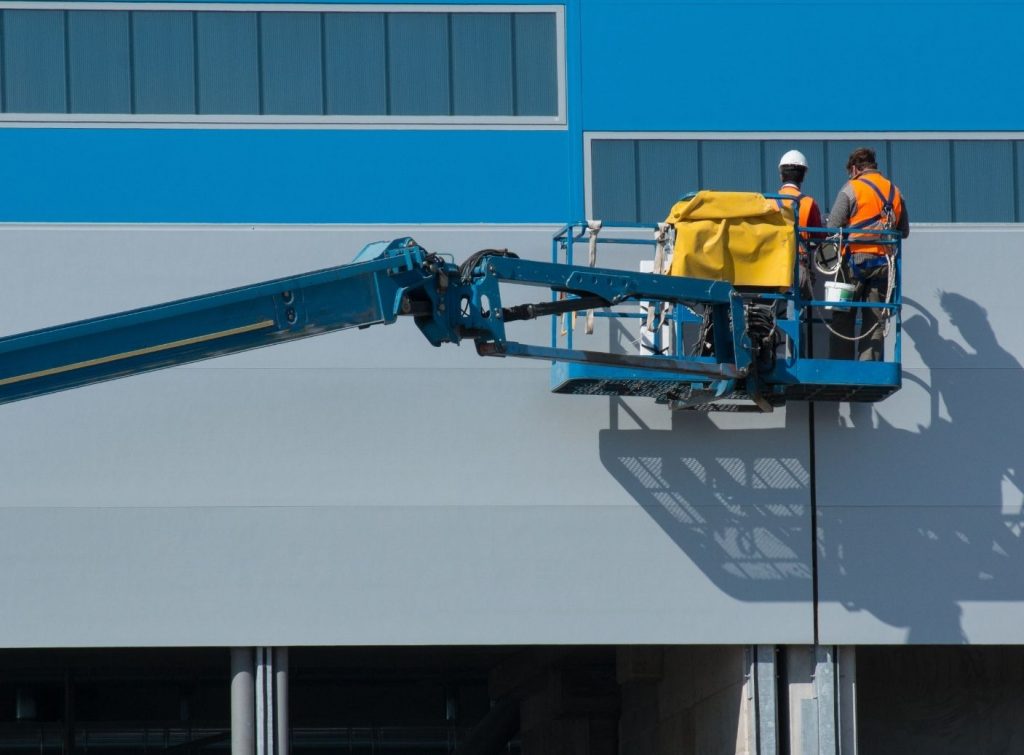Forklift Operator Safety Training
Tips for Safely Working on a Mobile Elevated Work Platform
Mobile Elevated Work Platforms (MEWPs) are lifts that can allow workers to reach high places. If they’re present in your workplace, take some time to read through the tips for safely working on a Mobile Elevated Work Platform below. It’s important for business owners and facility managers alike to know this information to ensure they’re enforcing the right protocols in the workplace.
Assigned Reading
Any MEWP operator should read the proper safety guidelines regarding this heavy machinery. Specifically, operators must read and abide by company, workplace, OSHA, local, and government regulations. It’s also the operator’s responsibility to read and understand all of the hazards in the appropriate operator’s manual. Taking some time to understand these rules won’t just make operators better at their job, but it will also keep their practices safe and responsible. Since MEWPs can be dangerous in the wrong hands, keeping safety and responsibility in mind is vital for employees.
Training Courses
There’s more to MEWP operating than reading some safety guidelines. Each MEWP operator should pass a thorough, OSHA-compliant training course. During this course, trainees should learn essentials, such as the ins and outs of the MEWP, proper handling practices, and what to look for during a pre-operation inspection. Furthermore, this process should include hands-on training, which is crucial for getting the operator ready for their first day on the job.
Pre-Operation Inspection
Operating a forklift requires employees to conduct a thorough pre-operation inspection, and MEWPs are no exception. These aerial lifts require a visual inspection for signs of damage and a hands-on test to determine whether all systems are working properly. If there’s a problem, immediately remove the MEWP from your workforce until the right professionals officially complete the proper repairs or maintenance.
Function Test
The operator is responsible for performing function tests according to the manufacturer’s recommendations. As with the pre-operation inspection, if there’s a problem, immediately remove the MEWP from your workforce until the right professionals officially complete the proper repairs or maintenance.
Workplace Risk Assessment
Before taking the MEWP out in the field, employees need to conduct a workplace risk assessment, including rescue planning. The assessment covers hazards like holes, unstable surfaces, dangling power lines, and any other dangers on or above the ground. After all, these are aerial lifts, so overhead hazards are just as dangerous as the hazards below. When lift operators spot hazards, they should meet with a designated supervisor or safety manager to develop a plan to combat any safety threats present.
Fall Protection
Working with MEWPs requires the proper PPE, particularly when it comes to fall protection. As mentioned above, these are aerial lifts, so injuries or death from falling are very real dangers operators must be aware of when working on a MEWP. Even seemingly small movements at the base of a MEWP are typically going to result in significant shaking on the platform above. MEWP fall protection includes two crucial devices: the body harness and the self-retracting lifeline. This might sound obvious to some, but it’s worth noting that you should always be sure that the body harness fits properly. An insufficient harness will do an insufficient job protecting your crew.
This list includes only a few of the many important tips for safely working on a Mobile Elevated Work Platform. By enforcing these practices in the workplace, you and your team can work together to keep the facility safe. To start this endeavor, begin scheduling MEWP operator training for your new hires so you can help them start their new roles on the right foot.



Insightful post—thank you for spotlighting the importance of industrial safety and training. At CESL, backed by over 50 years of legacy through the Mtandt Group, we’ve made it our mission to revolutionize safety standards across India’s industrial landscape. With accredited programs in MEWP Training, Work at Height, and GWO Basic Safety Training, we’ve proudly conducted 5000+ sessions nationwide. It’s encouraging to see more conversations on workforce skill development and accident prevention—we’re always eager to collaborate and learn from like-minded safety professionals.